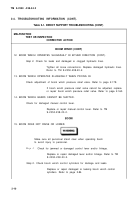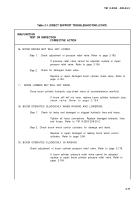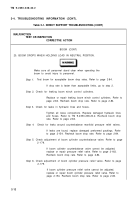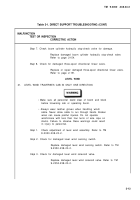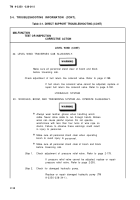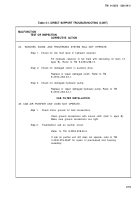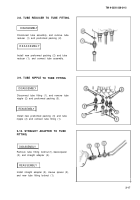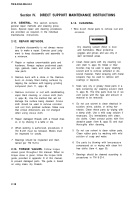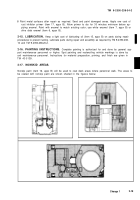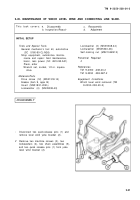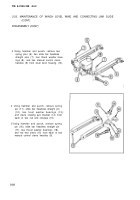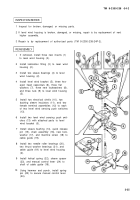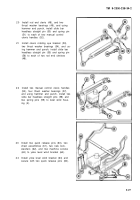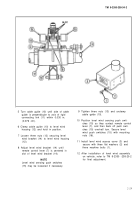TM-9-2350-238-34-2 - Page 33 of 327
TM 9-2350-238-34-2
2-18.
●
TOUCHUP AND RECOATING.
Chemical Agent Resistant
Coating (CARC) Paint: CARC
paint contains isocyanate, a
constituent that can cause
respiratory effects during and
after the application of the
material. During the application
of CARC paint, coughing,
shortness of breath, pain on
respiration, increased sputum,
and chest tightness may occur.
CARC paint also produces it-
ching and reddening of the
skin, a burning sensation of the
throat and nose, and watering
of the eyes.
●
An allergic reaction may occur
after initial exposure (ranging
from a few days to a few
months later), producing
asthmatic symptoms including
coughing, wheezing, tightness
in the chest, or shortness of
breath.
●
The following precautions must
be observed to insure the safe-
ty of personnel when CARC
paint is applied.
●
For brush/roller painting in con-
fined spaces, an airline respir-
ator is required, unless an air
sampling shows exposure to be
below standards. If the air
sampling is below standards,
either chemical cartridge or
airline respirators are required.
●
Spot painters applying CARC
paint by brush or roller must
wear clothing and gloves af-
fording full coverage,
●
Do not use water, alcohol, or
amine based solvents to thin or
remove CARC paints. Use of
these solvents with CARC
paints can produce chemical
reactions resulting in nausea,
disease, burns, or severe illness
to personnel.
●
Do not use paint solvents to
remove paint/coating from your
skin.
●
Mix paint/coating in a well-
ventilated mixing room or
spraying area away from open
flames. Personnel mixing
paint/coating should wear eye
protection.
●
Use paint/coating with ade-
quate ventilation.
●
Unusable
CARC
mixtures
may
be considered hazardous waste
and may require disposal IAW
Federal, state, DoD, and DA
hazardous waste regulations.
Consult the installation en-
vironmental office for proper
disposal guidance. Mixed CARC
has a flashpoint of approx-
imately 38°F (3°C) due to the
incorporation of solvents and is
highly flammable.
When touching up damaged areas, the pro-
cedure should be as similar to the original
method of finishing as possible; a clean sur-
face is imperative where general disintegra-
tion of the surface is evident, or the under
surface is corroded, the coating must be
stripped clean from the part. Corrosion must
be removed or neutralized by mechanical or
chemical treatment, or both, and the surface
metal must be pretreated, primed, and then
topcoated.
2-19. RESTENCILING VEHICLE MARK-
INGS. Refer to TM 9-2350-238-20-2.
2-20
Back to Top

